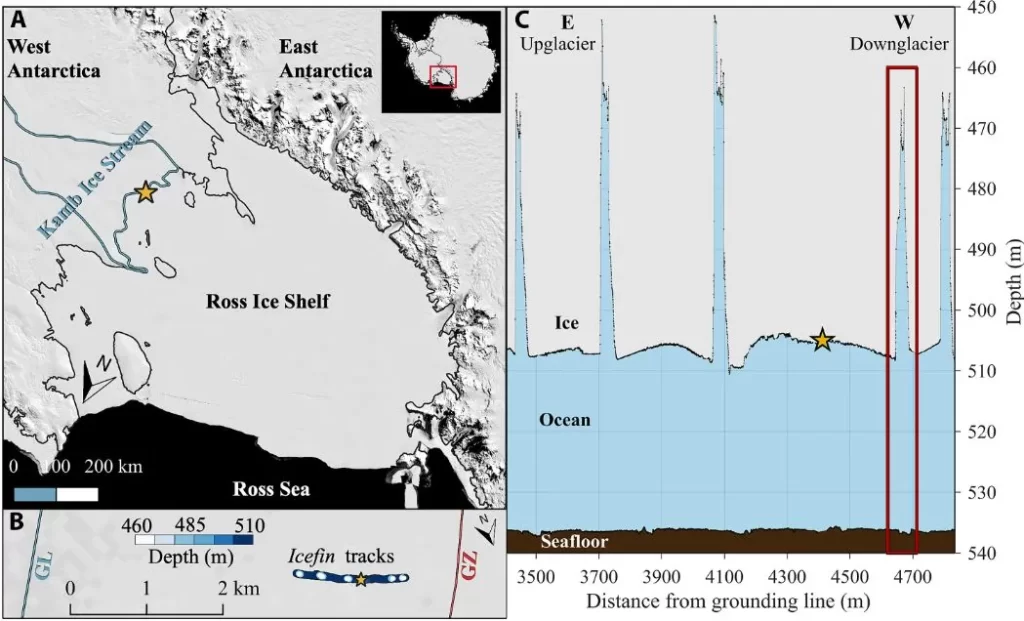New water circulation pattern discovered in Antarctic Ross Ice Shelf
An underwater robot operated by Cornell University has revealed a previously unknown water circulation pattern in a crevasse within the Ross Ice Shelf in Antarctica.
The remotely operated Icefin robot made a climb up and down a crevasse in the Ross Ice Shelf, producing the first-ever 3D measurements near the grounding zone, where the ice shelf meets the Antarctic coastline. This is a crucial area as grounding zones are instrumental in controlling the balance of ice sheets and can be greatly impacted by changing ocean conditions.
The survey conducted by the robot yielded a wealth of data: it revealed a new type of water circulation, referred to as a jet, that funnels water sideways through the crevasse. This was in addition to already known rising and sinking currents. The robot, measuring approximately 3.6 m (12 feet) in length and less than 0.25 m (10 inches) in diameter, was deployed via a 580 m (1 900-foot) borehole drilled with hot water near the Kamb Ice Stream.
The robot was equipped with various sensors to measure water temperature, pressure, and salinity, as well as cameras and sonar. It climbed nearly 46 m (150 feet) up one slope of the crevasse and descended the other, detailing various ice formations shaped by shifting water flows and temperatures. Among these were scalloped indentations, vertical runnels, green-tinted marine ice, and stalactites. The data suggests that melting at the crevasse base and salt rejection from freezing near the top drive water in varying directions around the horizontal jet, causing uneven melting and freezing on the two sides of the crevasse.

Peter Washam, a polar oceanographer and research scientist at Cornell University, emphasized that these crevasses serve as more than mere cracks in the ice. They actively move water along the coastline of an ice shelf to an extent previously unknown and in a manner unanticipated by existing models. The ocean seems to capitalize on these features, ventilating the ice shelf cavity through them.
The findings of this research, published in the journal Science Advances under the title “Direct Observations of Melting, Freezing and Ocean Circulation in an Ice Shelf Basal Crevasse,” indicate that these crevasses could be instrumental in transporting changing ocean conditions—whether warmer or colder—through an ice shelf’s most vulnerable regions. This adds a new layer of complexity to models predicting ice shelf melting rates, freezing rates, and their potential contributions to global sea-level rise.
References:
1 Direct observations of melting, freezing, and ocean circulation in an ice shelf basal crevasse – Peter Washam et al. – Science Advances – October 27, 2023 – DOI: 10.1126/sciadv.adi7638 – OPEN ACCESS
2 Underwater robot updates understanding of ice shelf crevasses – Cornell University – October 27, 2023
Featured image credit: Cornell University (stillshot)

Commenting rules and guidelines
We value the thoughts and opinions of our readers and welcome healthy discussions on our website. In order to maintain a respectful and positive community, we ask that all commenters follow these rules.